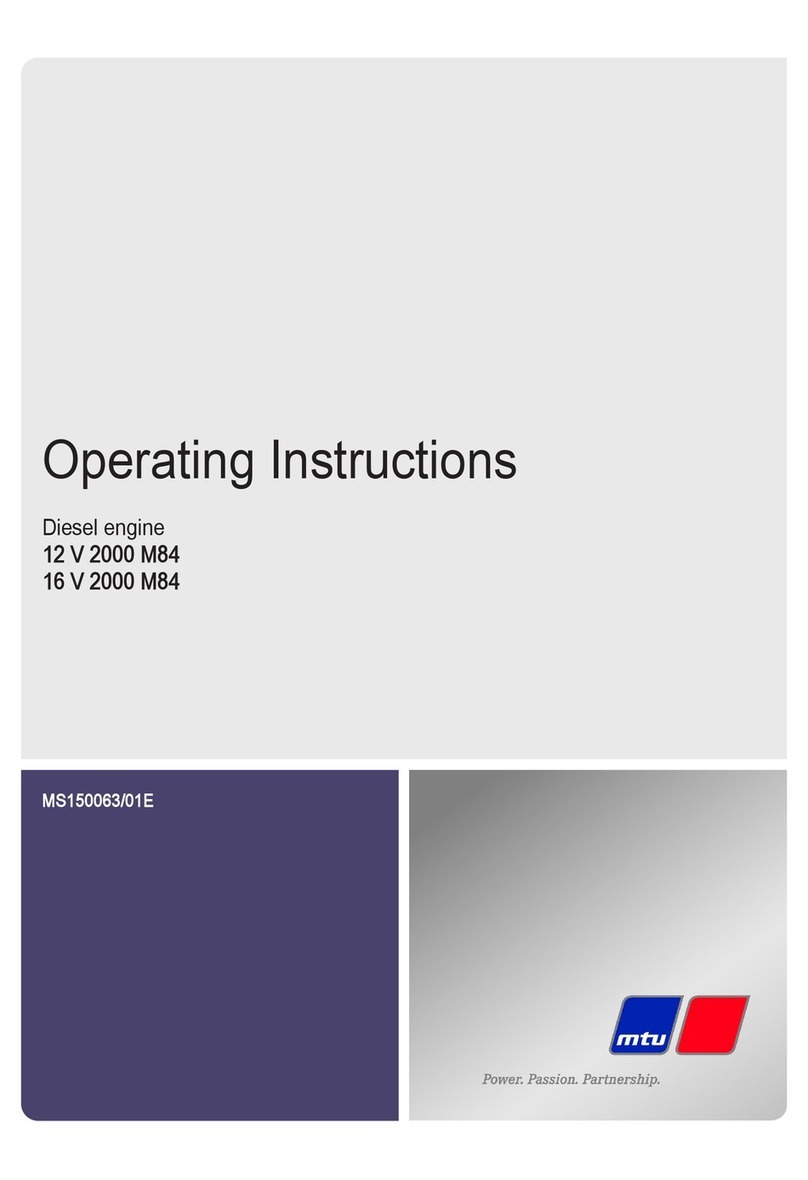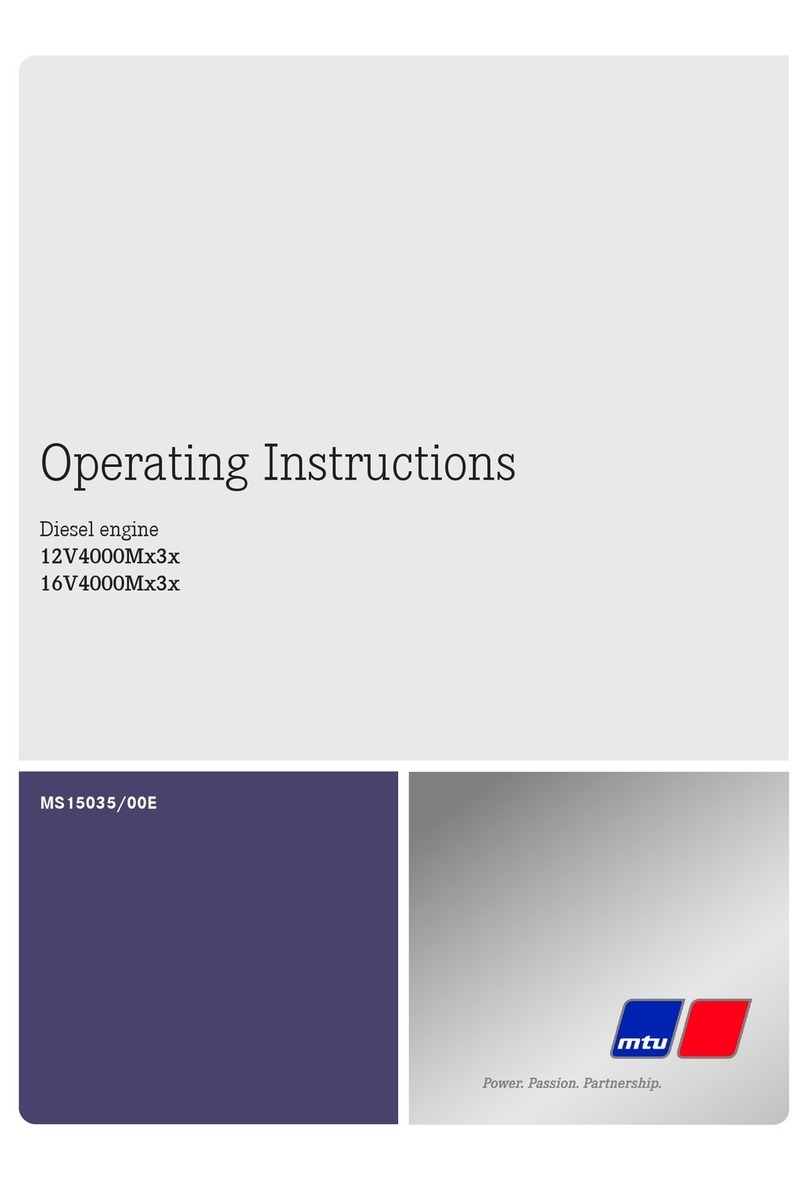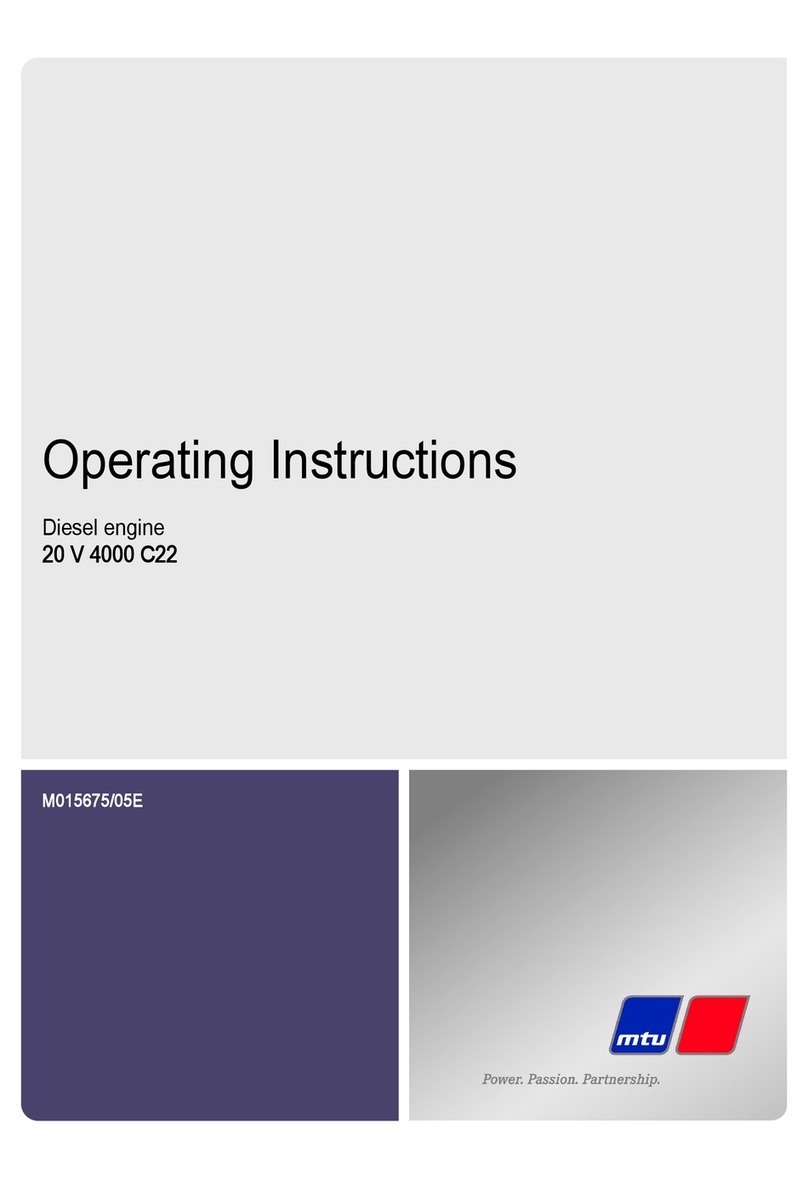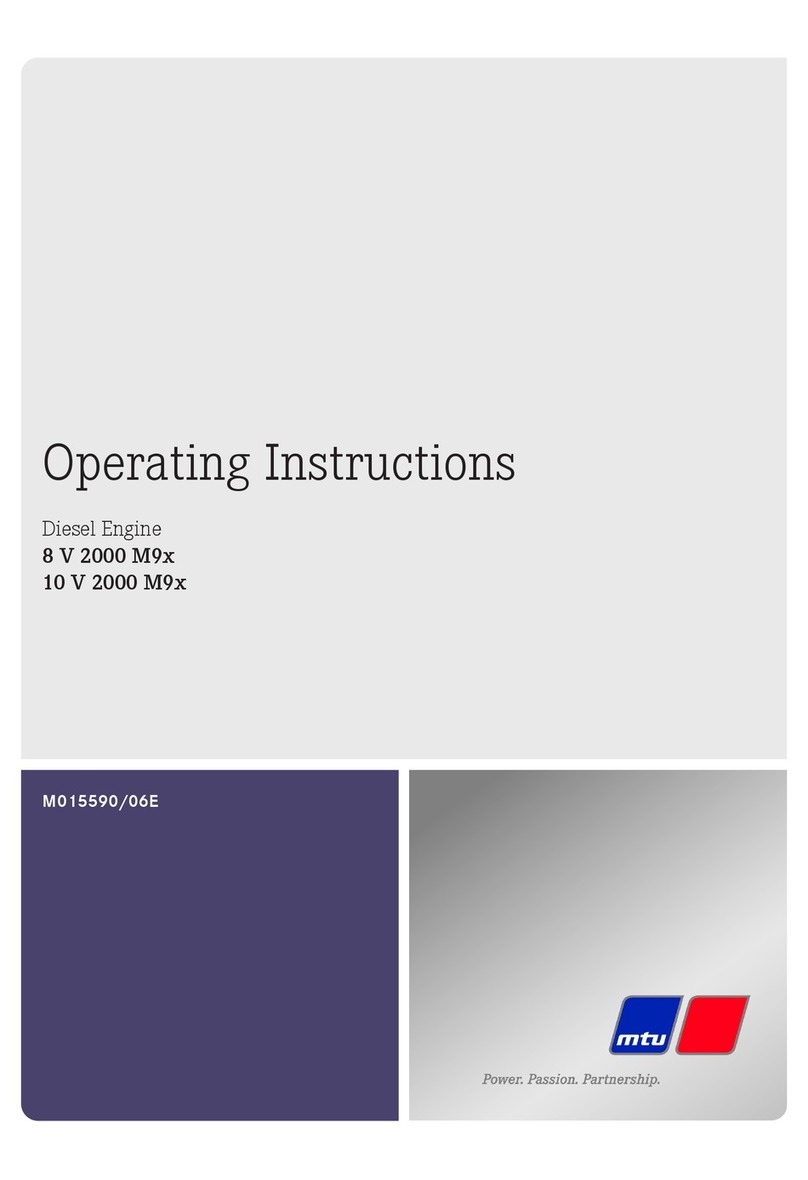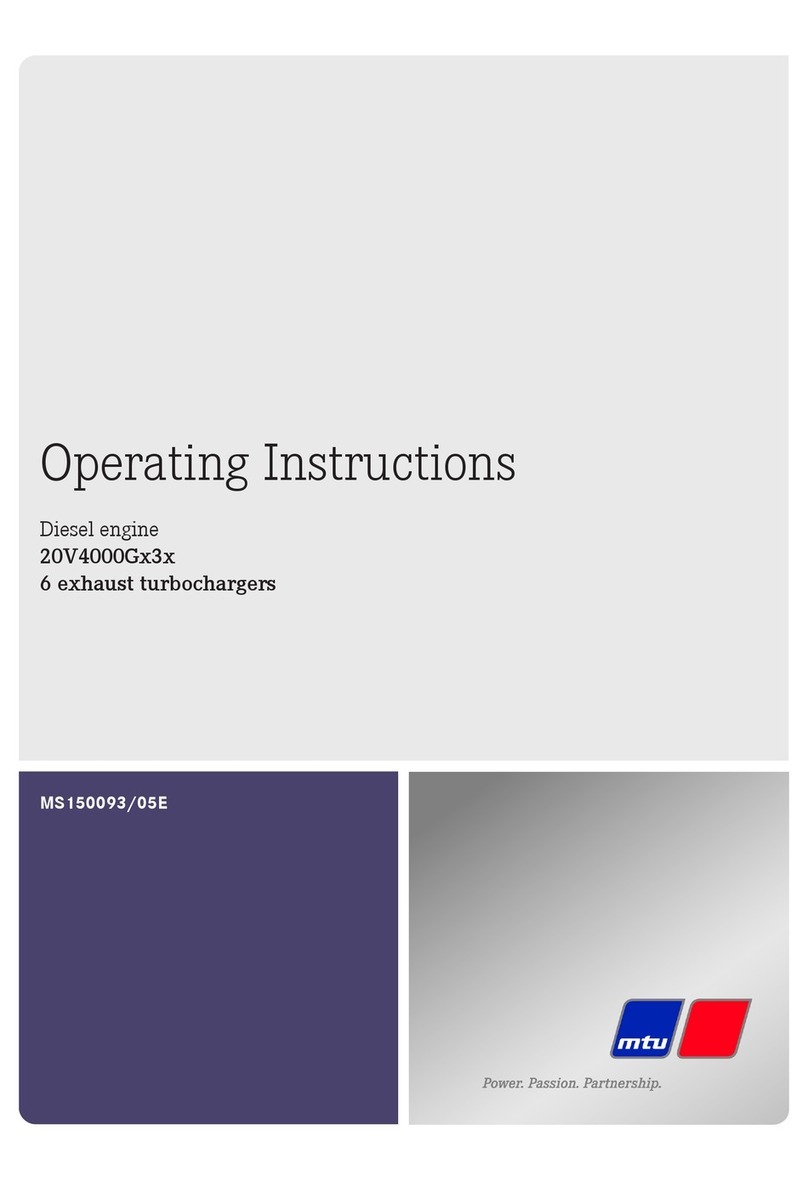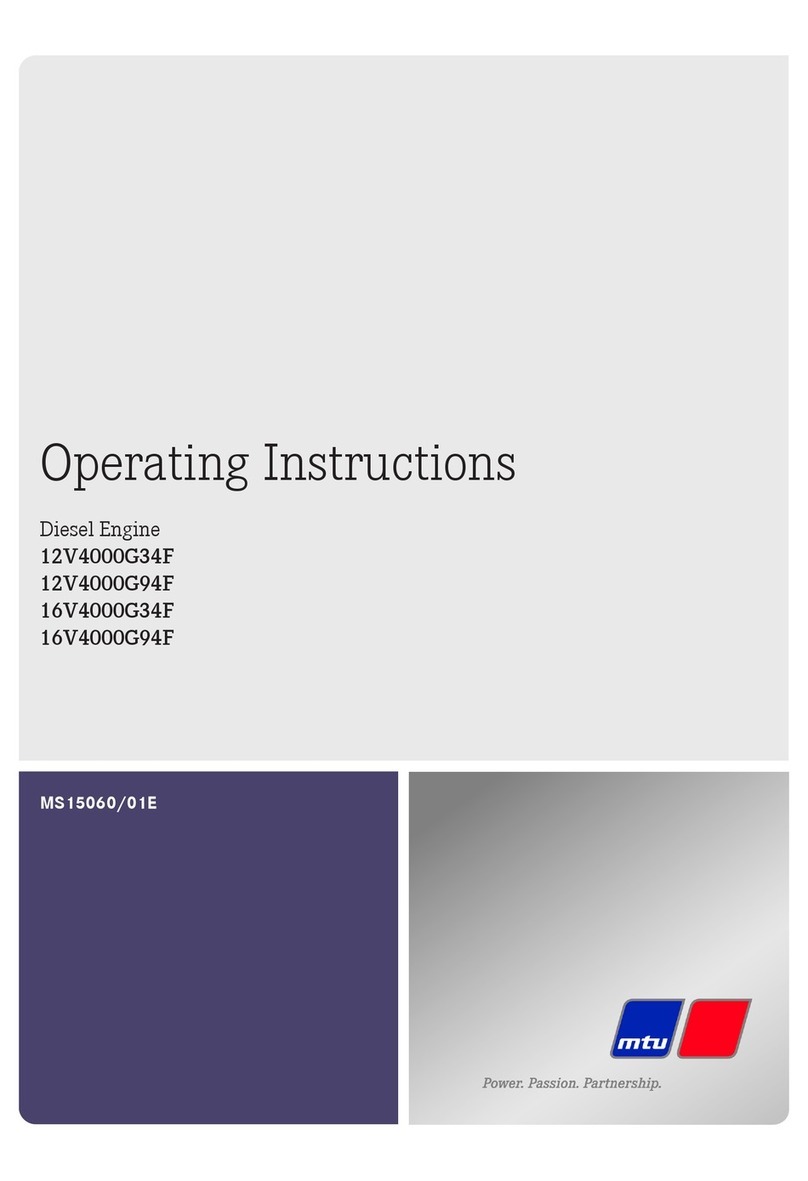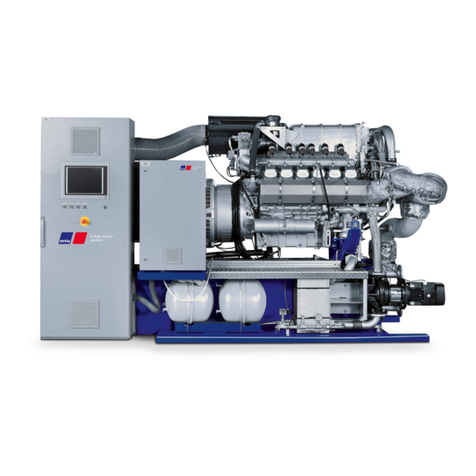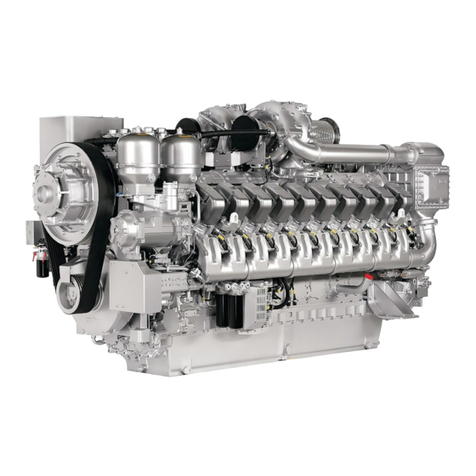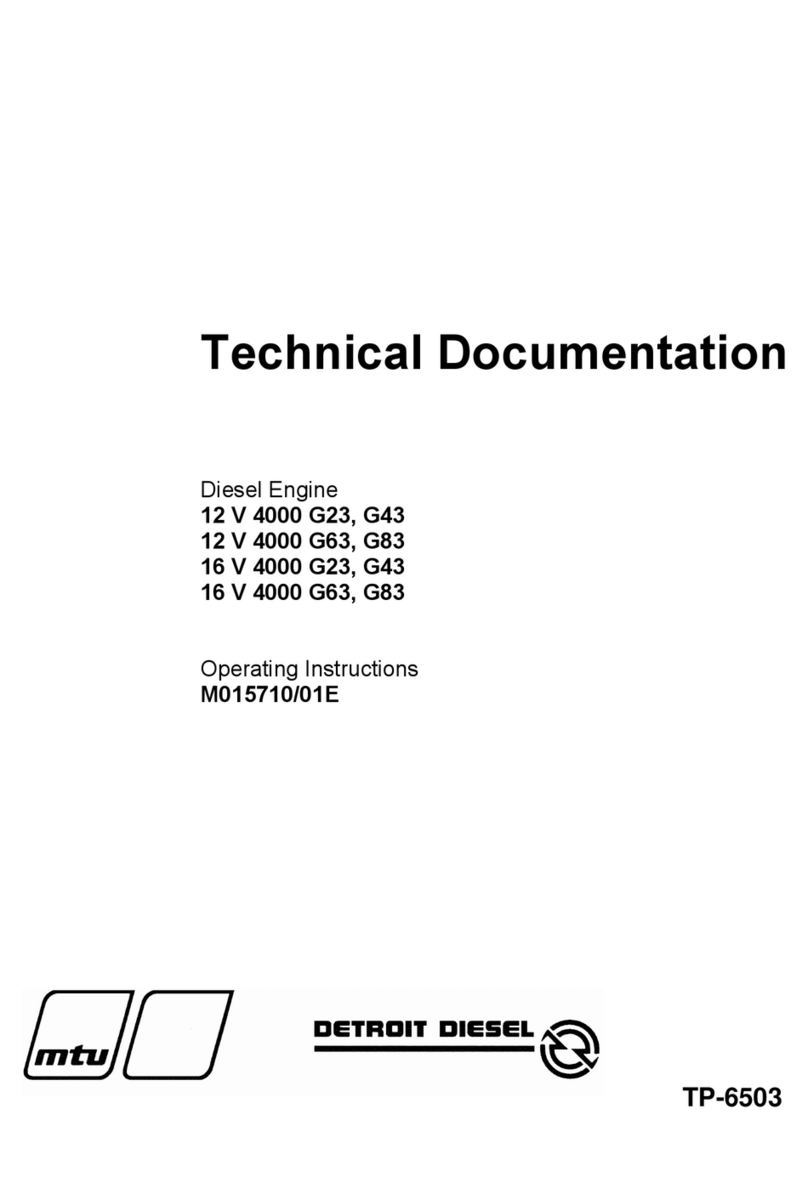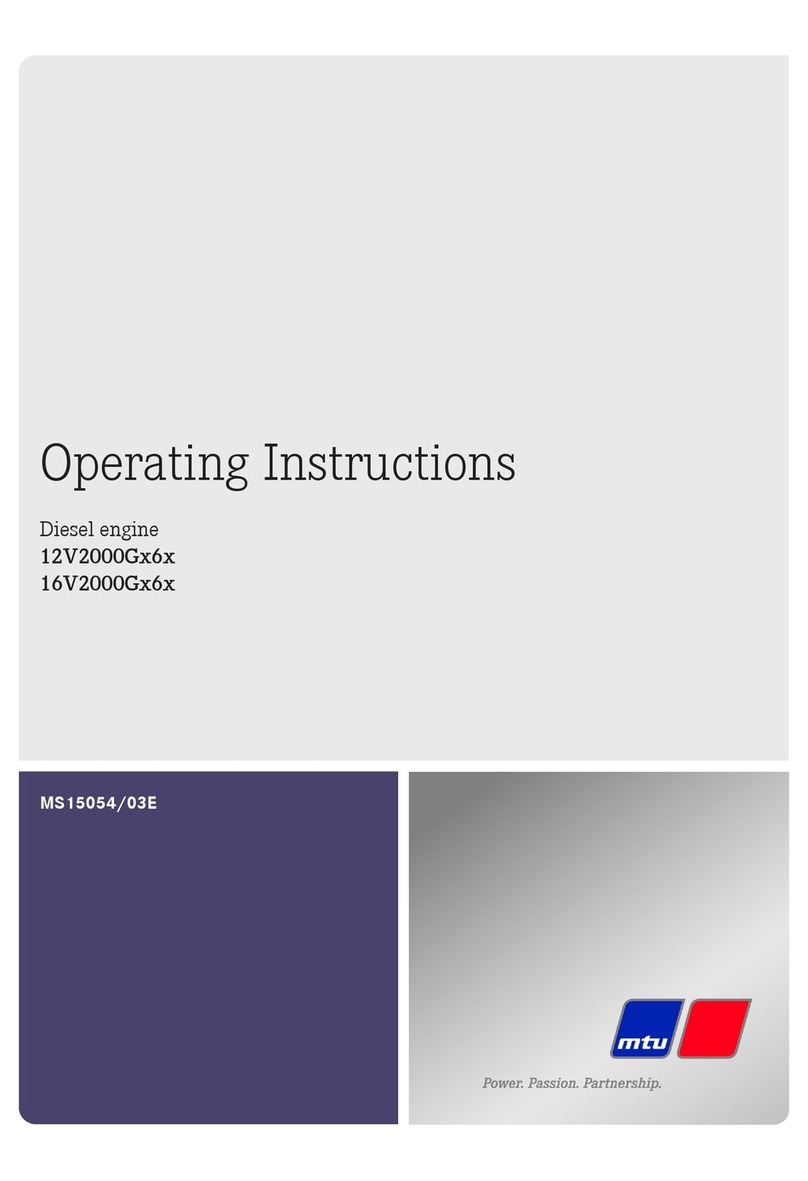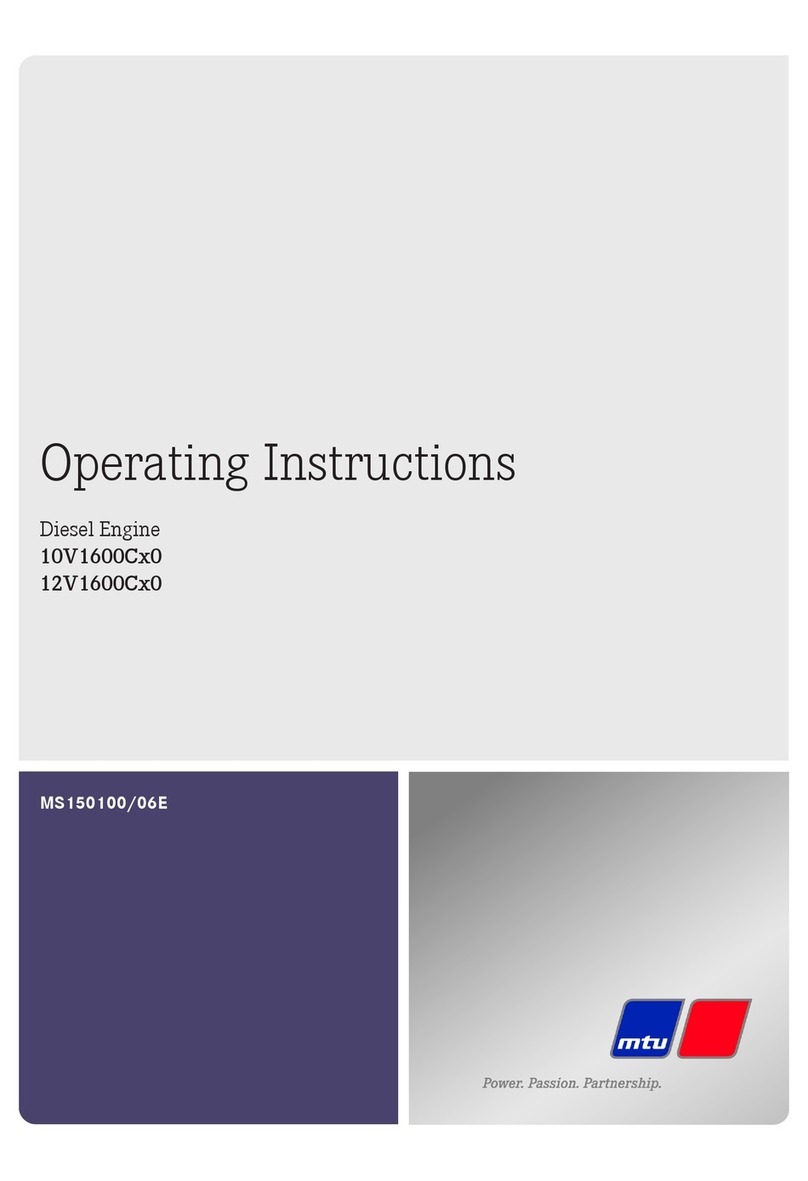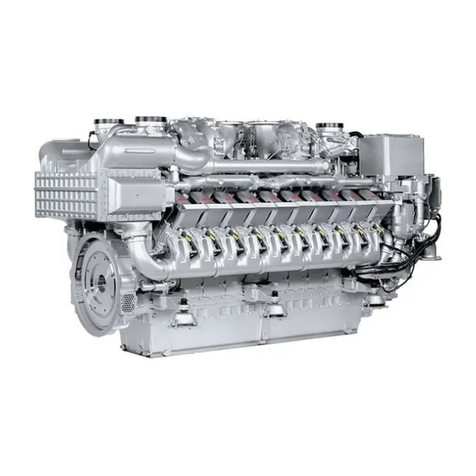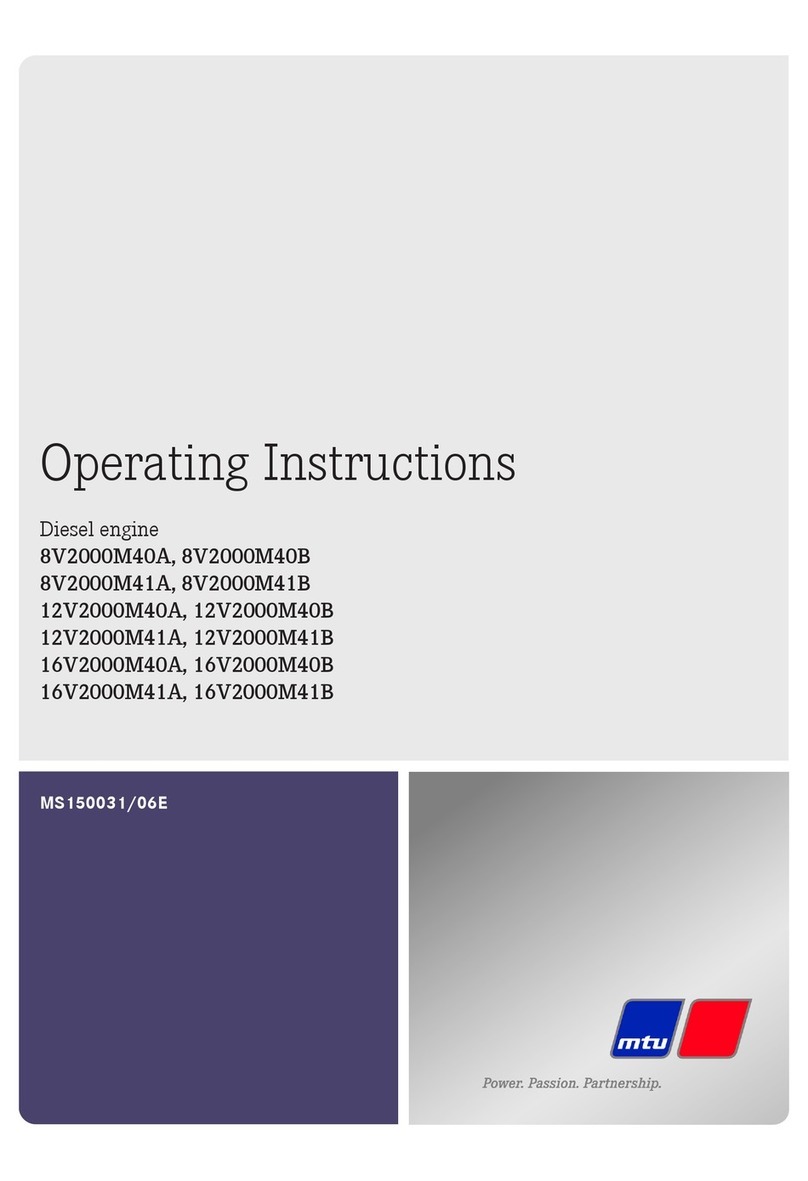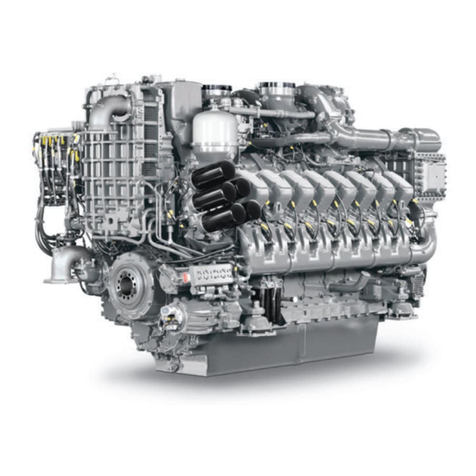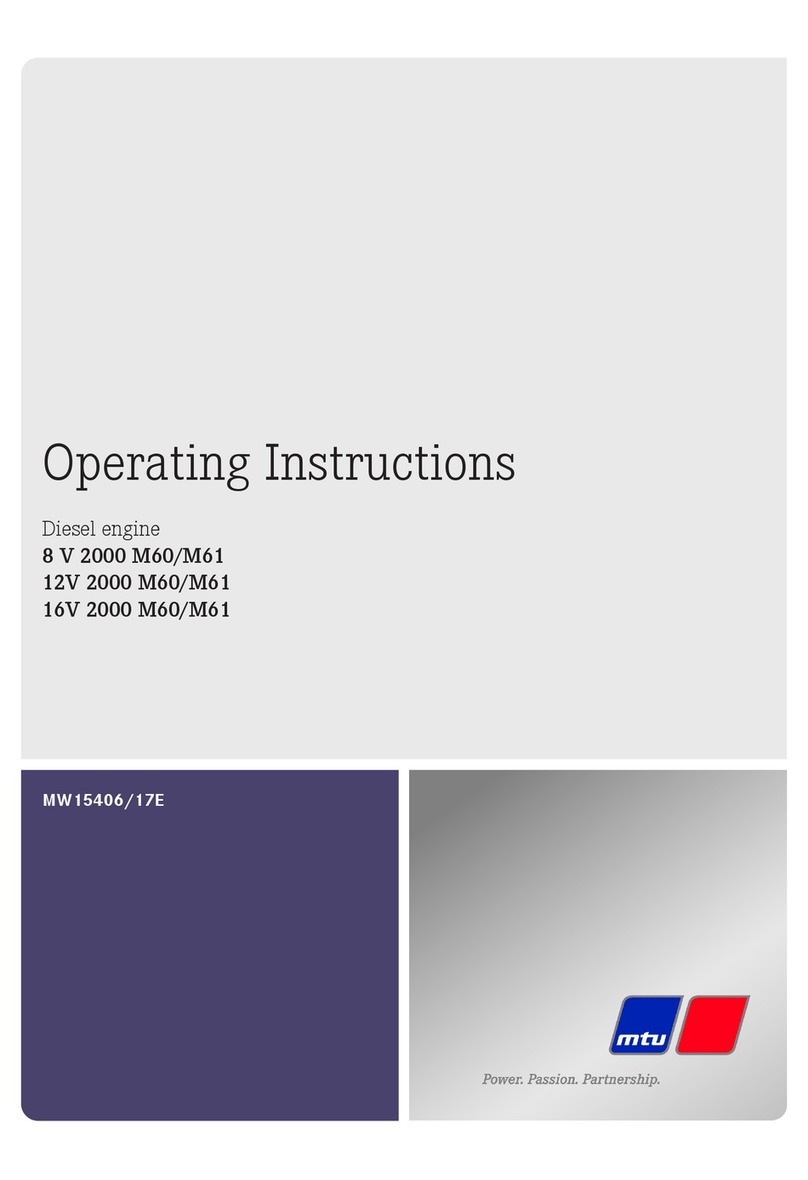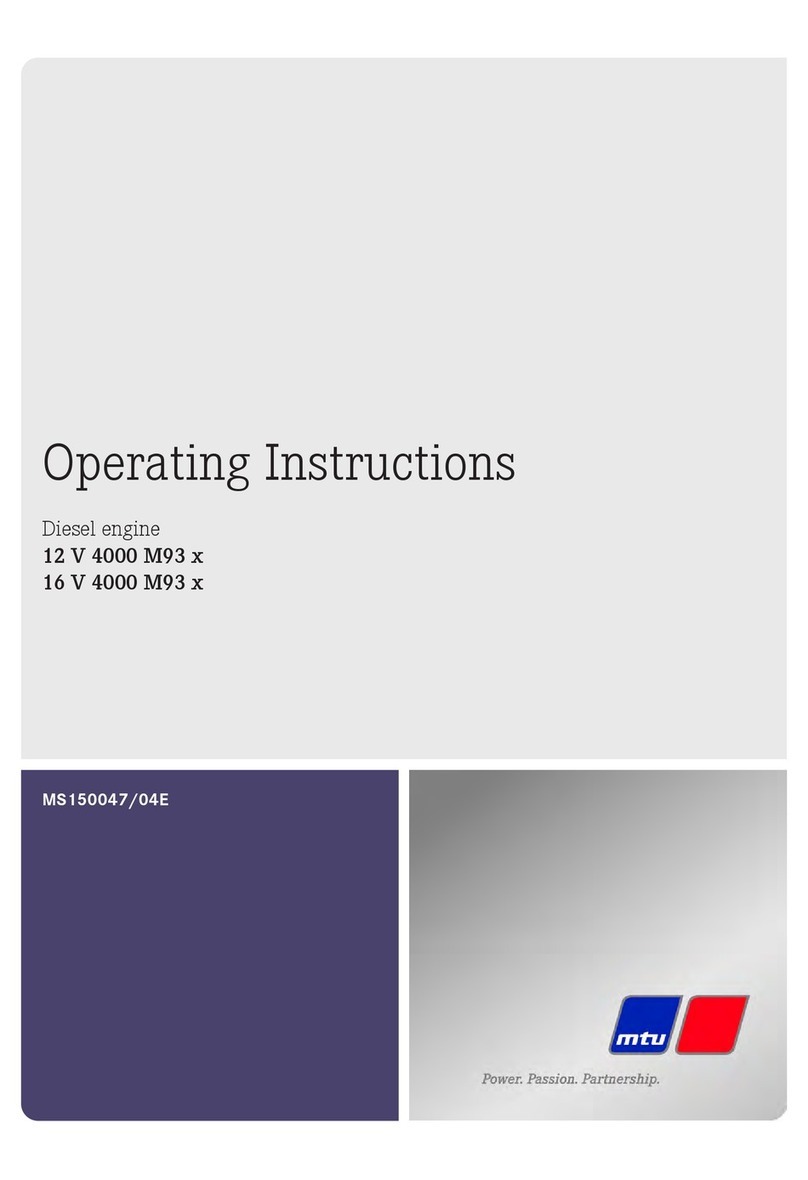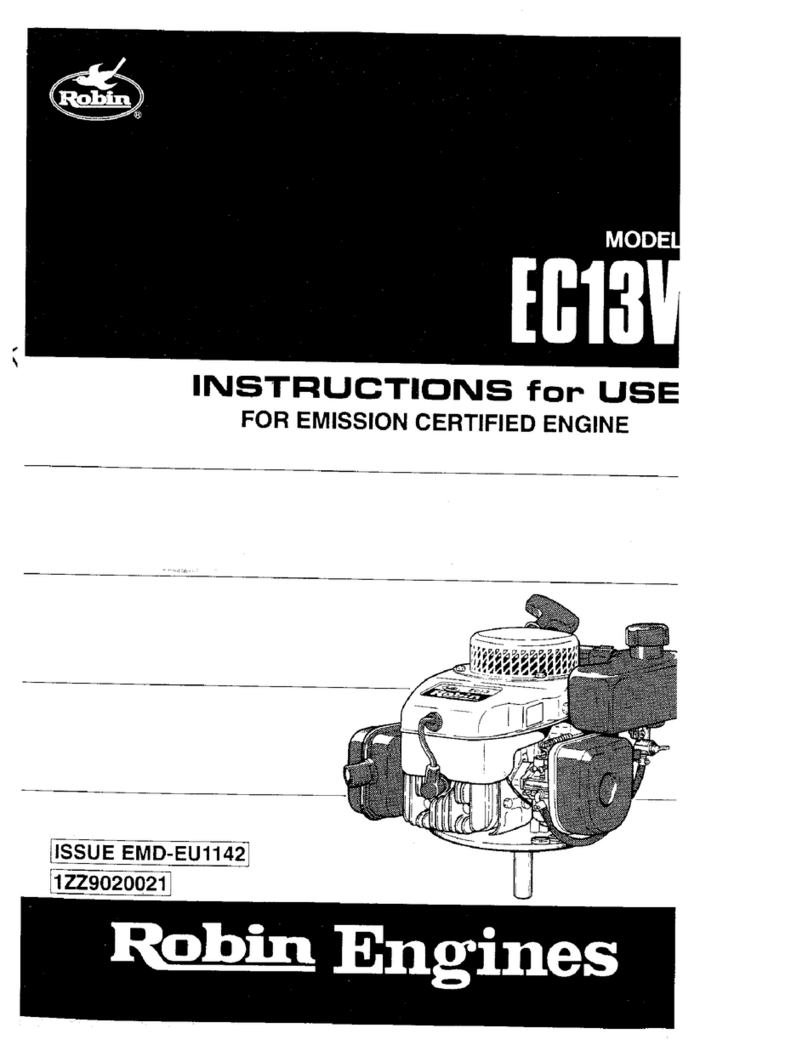
Table of Contents
1 Safety
1.1 General conditions 7
1.2 Personnel and organizational requirements 8
1.3 Transport 9
1.4 Crankshaft transport locking device 10
1.5 Safety regulations for startup and operation 13
1.6 Explosion hazard when removing
inspection port cover on engine 14
1.7 Safety regulations for maintenance and
repair work 15
1.8 Fluids and lubricants, fire prevention and
environmental protection 18
1.9 Conventions for safety instructions in the
text 20
2 General Information
2.1 Engine side and cylinder designations 21
2.2 Engine layout 22
3 Technical Data
3.1 12V 4000 engine data, continuous
operation, variable 3B, optimized fuel
consumption 23
3.2 12V 4000 engine data, continuous
operation, variable 3B, emissions optimized
w/o certificate 27
3.3 12V 4000 engine data, continuous
operation, variable 3B, emissions optimized
(TA-Luft) 31
3.4 Final compression pressure 34
3.5 Firing order 35
3.6 Engine – Main dimensions 36
4 Operation
4.1 Putting the engine into operation after
extended out-of-service periods (>3
months) 37
4.2 Putting the engine into operation after
scheduled out-of-service-period 38
4.3 Start engine in manual mode (testing
mode) 39
4.4 Starting the engine in emergency situations
(override mode) 40
4.5 Operational checks 41
4.6 Stop engine in manual mode (testing
mode) 42
4.7 Emergency stop 43
4.8 After stopping the engine – Engine remains
ready for operation 44
4.9 After stopping the engine – putting the
engine out of service 45
4.10 Plant – Cleaning 46
5 Maintenance
5.1 Maintenance task reference table [QL1] 47
6 Troubleshooting
6.1 Troubleshooting 48
6.2 Fault messages on engine governor 51
7 Task Description
7.1 Engine 63
7.1.1 Engine – Barring manually 63
7.1.2 Engine – Barring with starting system 64
7.1.3 Engine – Test run 65
7.2 Cylinder Liner 66
7.2.1 Cylinder liner – Endoscopic examination 66
7.2.2 Cylinder liner - Instructions and comments on
endoscopic and visual examination 68
7.3 Crankcase Breather 70
7.3.1 Crankcase breather – Oil separator
replacement, diaphragm check and
replacement 70
7.4 Valve Drive 72
7.4.1 Valve gear – Lubrication 72
7.4.2 Valve clearance – Check and adjustment 73
7.4.3 Cylinder head cover – Removal and
installation 75
7.5 Injection Pump / HP Pump 76
7.5.1 HP pump – Relief bore check 76
7.6 Injection Valve / Injector 77
7.6.1 Injector – Replacement 77
7.6.2 Injector – Removal and installation 78
7.7 Fuel System 83
7.7.1 Fuel system – Venting 83
MS150064/01E 2011-11 | Table of Contents | 5
DCL-ID: 0000014840 - 001

